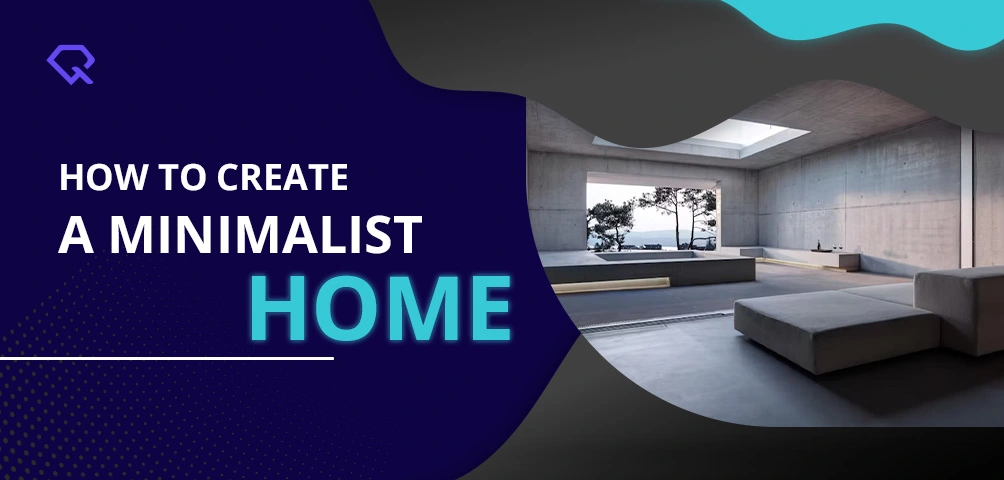
Etiam nibh pulvinar nonummy sagittis
January 31, 2022
Sustainable Interior Design | 8 Eco-Friendly Tips
August 23, 2024How to Create a Minimalist Home | interior design
In recent years, minimalist interior design has gained immense popularity as more people seek to simplify their lives and create spaces that promote peace and tranquility. A minimalist home is characterized by its simplicity, clean lines, and an overall sense of order. The goal is to reduce clutter and only keep items that are functional or have sentimental value. If you’re looking to transform your space into a minimalist haven, here’s a comprehensive guide to help you achieve that.
Start with Decluttering
The first step in creating a minimalist home is to declutter. This process involves getting rid of items that you don’t need, use, or love. Minimalist home decor thrives on the principle that less is more. Begin by sorting through each room and removing unnecessary items. Ask yourself if each item serves a purpose or brings you joy. If not, it’s time to let it go.
Consider donating, selling, or recycling items that are still in good condition. The goal is to create an environment that feels open and spacious, allowing you to focus on the essentials.
Embrace Neutral Colors for minimalist interior design
One of the key elements of minimalist interior design is the use of a neutral color palette. Neutral colors such as white, beige, gray, and soft pastels create a calming and serene atmosphere. These colors reflect natural light, making your home feel brighter and more spacious.
When choosing paint colors, opt for shades that are subtle and understated. You can add depth and interest to your space by incorporating different textures and materials in the same color family. For example, pair a soft gray sofa with a cozy wool throw and a sleek metal lamp in the same hue.
Invest in Quality Over Quantity
Minimalism is not about filling your home with as few items as possible but rather about being intentional with your choices. When selecting furniture and decor, prioritize quality over quantity. Choose pieces that are well-made, durable, and timeless.
In a minimalist home, every item should serve a purpose or enhance the aesthetic of the space. Instead of purchasing multiple cheap items, invest in a few high-quality pieces that you truly love. This approach not only enhances the overall look of your home but also reduces the need for frequent replacements.
Keep Your Space Organized | minimalist interior design
Organization is a crucial aspect of minimalist home design. Clutter can quickly accumulate if you don’t have a system in place to keep everything in order. Invest in storage solutions that help you maintain a tidy space.
Built-in storage, such as cabinets, shelves, and drawers, can be incredibly useful for keeping your belongings out of sight. Consider furniture with hidden storage compartments, such as ottomans with storage inside or beds with drawers underneath. This allows you to keep your space organized without compromising on style.
Incorporate Natural Elements
Minimalist interior design often draws inspiration from nature. Incorporating natural elements into your minimalist home decor can enhance the aesthetic and create a sense of harmony. Consider adding indoor plants, wooden furniture, or stone accents to bring the outdoors in.
Plants not only add a touch of greenery to your space but also improve air quality and create a calming atmosphere. Choose low-maintenance plants that thrive indoors, such as succulents, snake plants, or peace lilies.
Wooden furniture, whether it’s a dining table, a coffee table, or shelving, adds warmth and texture to a minimalist home. Opt for light, natural wood finishes to maintain the overall simplicity of the design.
Focus on Functionality
In a minimalist home, functionality is key. Every piece of furniture and decor should serve a purpose. When designing your space, consider how each item will be used and how it contributes to the overall function of the room.
For example, in a minimalist living room, choose a comfortable sofa with clean lines, a functional coffee table, and a few well-chosen decorative items. Avoid overcrowding the space with unnecessary furniture or accessories. The goal is to create a space that is both beautiful and practical.
Limit Decorative Items
While it’s important to personalize your space, too many decorative items can disrupt the minimalist interior design aesthetic. Instead of filling your home with knick-knacks and accessories, choose a few statement pieces that complement the overall design.
Consider art pieces, sculptures, or vases that add visual interest without overwhelming the space. When selecting decor, opt for items that have a simple design and a cohesive color scheme. Remember, minimalism is about quality, not quantity.
Maintain a Clean and Tidy Space
A minimalist home should always feel clean and organized. Regular cleaning and maintenance are essential to preserving the simplicity and tranquility of your space. Develop a cleaning routine that works for you, whether it’s daily tidying up or a weekly deep clean.
Keep surfaces clear of clutter and ensure that everything has its designated place. By maintaining a tidy space, you’ll be able to fully enjoy the calm and peaceful environment that minimalist home decor creates.
Create a Focal Point
In minimalist interior design, creating a focal point in each room can add interest and prevent the space from feeling too stark. A focal point can be a piece of art, a piece of furniture, or even a view from a window.
For example, in a minimalist bedroom, the bed can serve as the focal point. Choose a bed with a simple, elegant design and dress it in high-quality linens. Keep the rest of the room uncluttered, allowing the bed to be the main attraction.
In a living room, a large piece of art or a statement sofa can serve as the focal point. Arrange the rest of the furniture and decor to complement this central piece, ensuring that it remains the star of the room.
Embrace Open Spaces
Minimalism is about embracing open spaces and allowing the design to breathe. Avoid overcrowding your rooms with too much furniture or decor. Instead, focus on creating a sense of flow and continuity throughout your home.
Leave plenty of negative space around your furniture to enhance the feeling of openness. This not only makes your home feel larger but also allows each piece to stand out and be appreciated.
Conclusion for How to Create a Minimalist interior design Home
Creating a minimalist home is about more than just adopting a simple home design. It’s a lifestyle choice that promotes mindfulness, intentionality, and a focus on what truly matters. By decluttering, embracing neutral colors, investing in quality, and focusing on functionality, you can create a space that is both beautiful and serene. Remember, the key to minimalist home decor is to keep it simple, organized, and meaningful.


